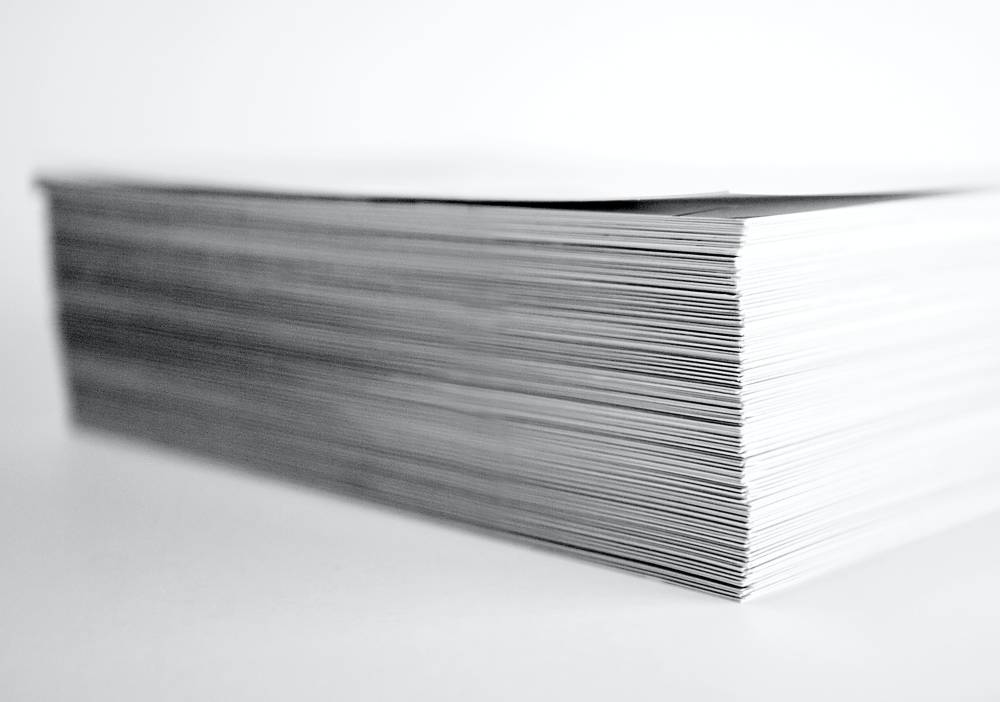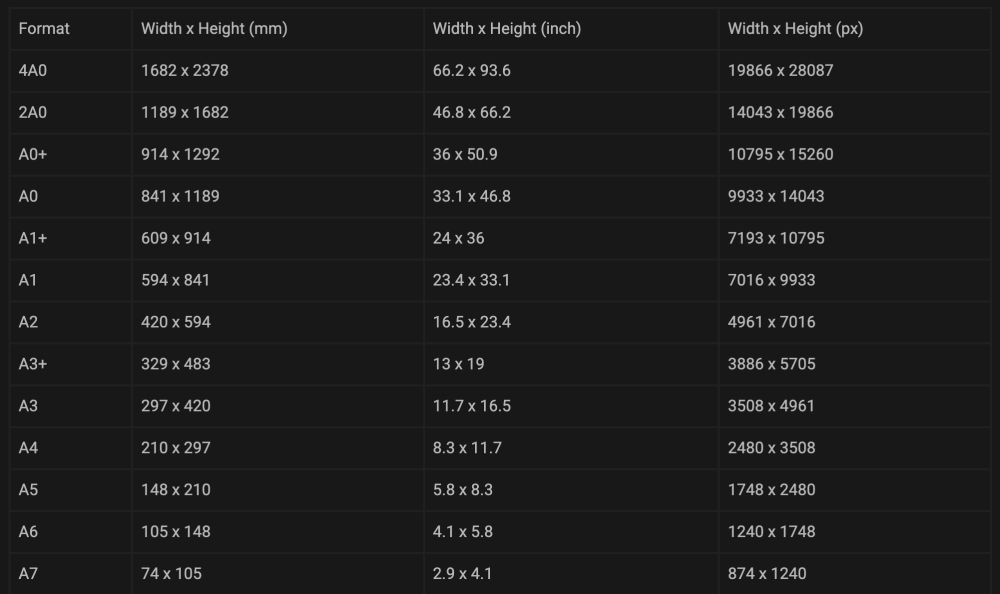Understanding paper sizes can be a bit of a challenge, especially when you consider that different countries and industries use different standards. However, with a little knowledge and a handy guide, it's easy to make sense of the often-confusing world of paper dimensions. Let's dive into the basics of paper sizes, the different standards in use today, and practical tips on choosing the right size for your needs.
The Basics of Paper Sizes
At its core, paper size refers to the dimensions of a sheet of paper. These dimensions can vary widely, from tiny postage stamps to massive billboard sheets. Most often, you'll encounter standard sizes like Letter, Legal, or the A series (A4, A3, A2, etc.) in everyday use.
A Series Paper Sizes
The A series of paper sizes is an international standard, known as ISO 216, that is widely used in countries outside of North America. This global standardization ensures consistency and ease of use across various regions and industries.
At the heart of the A series is the most common size, A4. Measuring 210 x 297 mm, A4 is a staple in offices, schools, and institutions around the world. It is the go-to size for documents like letters, forms, and stationery, and it's also the standard size for home and office printers.
However, the A series doesn't stop at A4. It extends from A0 to A10, offering a wide range of sizes to suit different needs. The largest size in the series, A0, has an area of 1 square meter, making it a popular choice for large format printing, such as posters and technical drawings.
The beauty of the A series lies in its logical progression of sizes. Each subsequent size in the series is half the size of the previous one when folded parallel to the shorter sides. For instance, if you take an A3 sheet and fold it in half, you get two A4 sheets. Similarly, if you fold an A4 sheet in half, you get two A5 sheets. This standardization of sizes not only simplifies reproduction and enlargement of documents but also makes storage and filing more convenient.
In summary, the A series is a versatile and practical system of paper sizes that caters to a multitude of everyday needs. Whether you're printing a flyer, crafting a booklet, or creating a large-scale diagram, the A series has a paper size that's right for you.
B Series Paper Sizes
While not as commonly used as the A series, the B series is another standardized series that plays a crucial role in the world of paper sizes. Governed by the same international standard, ISO 216, the B series provides sizes that fall in between the corresponding A series sizes.
To visualize this, consider the B4 size. It is larger than an A4 but smaller than an A3, filling a gap that the A series doesn't cater to. This unique feature makes the B series an excellent choice for special applications where A series sizes may not be suitable. For example, B series paper is often used for book covers, wall charts, posters, and folders, where the slightly larger dimensions can offer a more suitable fit.
C Series Paper Sizes
Shifting the focus from document paper sizes, we come to the C series. Primarily used for envelopes, the C series is designed to accommodate the A series papers. This series, standardized under ISO 269, ensures that there's always an envelope that fits your document just right, without too much extra space or too tight a squeeze.
The sizes in the C series are in between the corresponding A and B series sizes. For example, a C4 envelope can perfectly accommodate an unfolded A4 paper, while a C5 envelope is ideal for an A5 paper or a folded A4 paper. This makes the C series a vital companion to the A series, providing the perfect vessel for your letters, documents, and mailings.
Both the B and C series play important roles in complementing the A series. While they may be used less frequently in everyday scenarios, their presence provides flexibility and offers solutions for unique requirements in both professional and personal settings.
North American Paper Sizes
While the A, B, and C series of paper sizes dominate most of the world, North America, including the United States and Canada, employs a different standard. This system, often referred to as the U.S. Letter standard, is based on inches rather than millimeters, reflecting the region's use of the imperial measurement system.
The most commonly used sizes in this system are Letter, Legal, and Ledger or Tabloid.
Letter: The Letter size, measuring 8.5 x 11 inches, is the standard paper size used in the United States and Canada. It's the go-to choice for a wide variety of documents, including letters, memos, and standard printed documents. Just like the A4 size in the ISO 216 standard, Letter is the default setting in most American printers and copiers.
Legal: Slightly longer than the Letter size, the Legal size measures 8.5 x 14 inches. As its name implies, it's commonly used in legal environments for documents such as contracts and applications. The extra length provides additional space for more text or clauses, often necessary in legal paperwork.
Ledger/Tabloid: The Ledger or Tabloid size is another popular choice, especially for larger documents. Measuring 11 x 17 inches, it's exactly twice the size of the Letter paper. This size is widely used for diagrams, charts, or drawings that require larger format paper. It's also commonly used in newspapers, hence the alternative name 'Tabloid'.
Though different from the international ISO standard, the U.S. Letter standard serves the needs of North American users effectively. It's important to be aware of these differences, especially when dealing with international documents or when designing documents that will be printed in different regions. Understanding these variations allows for better communication, effective design, and ease of use across borders.
Choosing the Right Paper Size
Selecting the right paper size depends on your specific needs. Here are a few general guidelines:
- Documents, essays, and forms usually use A4 or Letter size.
- Legal documents often use Legal size (though this can vary).
- Posters and large format prints often use sizes like A2, A1 or larger.
- Business cards typically use a standard size of 85 x 55 mm in the UK/Europe and 3.5 x 2 inches in the US.
Understanding paper sizes doesn't have to be complicated. With this guide, you now have a basic understanding of the most common paper sizes and when to use them. Whether you're printing a document, crafting a poster, or designing a business card, knowing the right paper size can make your work look professional and well-structured.



